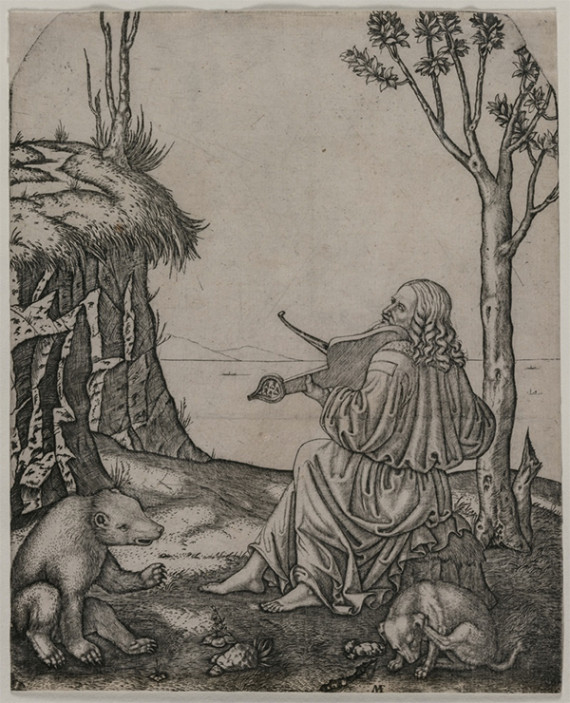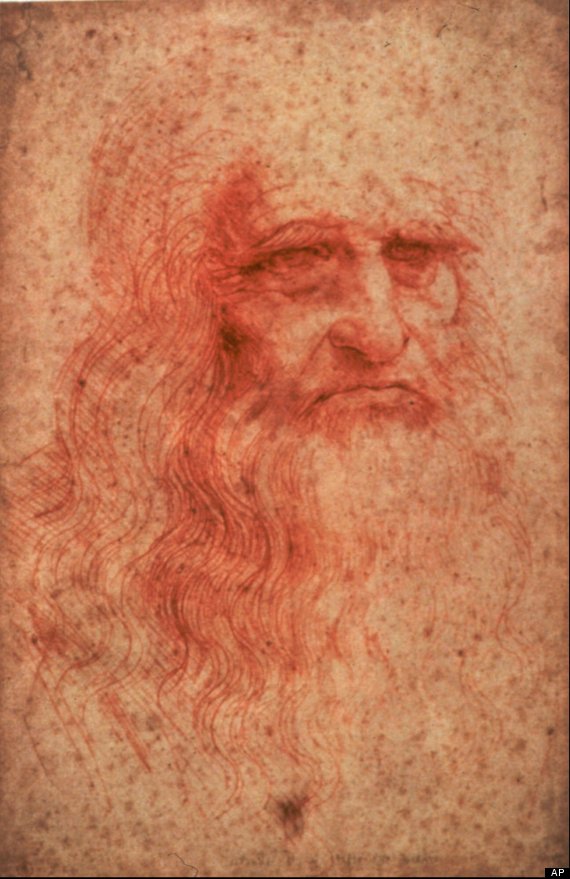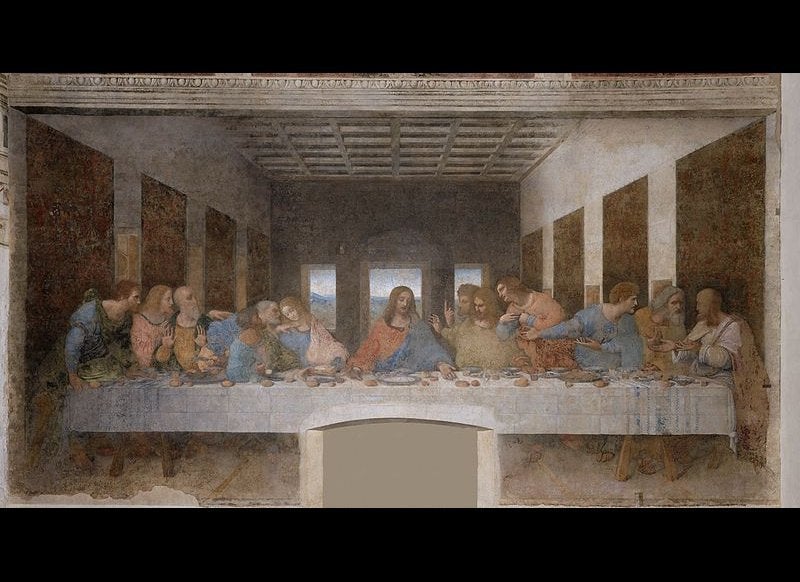For centuries, a 500-year old engraving by Marcantonio Raimondi sitting in the Cleveland Museum of Art was thought to depict the Greek mythological figure of Orpheus, rocking out on his lira da braccio. However, Ross Duffin, a music professor at Cleveland's Case Western Reserve University, has a different idea.
In an article for Cleveland Art magazine, Duffin illuminated the differences between Orpheus -- often rendered as a clean-shaven youngin' -- and the man in the image -- a jolly older fellow with noticeably luscious locks.
After a bit of detective work, Duffin noticed that while the handsome man in the 1505 work didn't quite adhere to the common depictions of Orpheus at the time, they did have a lot in common with a certain Renaissance master: Leonardo da Vinci.

There exist only two portraits of the elusive Leonardo, but, according to Duffin, the features depicted in them resemble those apparent in Cleveland's mysterious engraving. He writes: "[A portrait by Francesco Melzi] shows a man with a beard and long curls, and the very slight bump in his nose and the ridge above the brow are an excellent match for the long-haired, bearded [man] in the Marcantonio engraving."
Not only does Leonardo bear resemblance to the long-haired man in the image, the two also share a musical passion. As art historian Giorgio Vasari wrote in 1550: "Leonardo brought with him that instrument which he had made with his own hands, in great part of silver, in order that the harmony might be of greater volume and more sonorous in tone, with which he surpassed all the musicians who had come together there to play."
Between the physical resemblance and the lira factor, Duffin's art historical theory has gained some momentum. "This is serious and stands some chance of being right," Leonardo scholar Martin Kemp, a professor emeritus of art history at Oxford University, wrote in an email to Live Science.

Leonardo da Vinci, Head of a Man (Possibly a Self-Portrait?), red chalk, from Leonardo's Codex on the Flight of Birds, c.1505 (Biblioteca Reale, Turin)
The remaining question is: how and when did these two men -- Raimondi, a Bologna-based engraver, and Leonardo, who spent time in Florence, Milan, and Rome -- cross paths? "The problems are of time and place," Kemp continued. "Marcantonio was working in Bologna at this early stage of his career, and there is no obvious way they would have met. At this stage, I would say that it is temptingly possible but unproven."
Duffin does posit a scenario that could have served as the potential meeting place -- a 1506 production of "Orfeo" in Milan. In fact, it's even possible that Leonardo starred in "Orfeo," an opera, as the lead character of Orpheus, instrument in hand. If not, Duffin also suggests Raimondi could have created the work from a reference portrait without ever having met Leonardo in person.
We reached out to Carol Herselle Krinsky, Professor of Art History at New York University, who seemed ambivalent about the discovery, and even more so about the engraving itself. "Professor Duffin was right to notice that this is an uncommon portrayal of Orpheus," Krinsky wrote in an email to The Huffington Post. "If [Raimondi] made a print with Leonardo as Orpheus, and did it on speculation that people would buy it, he might have wanted to show the great man even more conspicuously and suggest his own familiarity with him. Here, the musician competes for our attention with a bear and a scratching dog. It's true, though, that the engraver was still young when he made the print and not yet at his most mature and thoughtful."

Leonardo da Vinci, Head of an Old Man (Possibly a Self-Portrait?), red chalk on light brown paper, c.1495 or c.1514 (Biblioteca Reale, Turin)
Krinsky was most intrigued by the unusual decision to align a mythical figure and an artist, as opposed to a nobleman. "The interesting part is not the face itself but rather the portrayal of Leonardo as Orpheus -- in other words, as a musician in addition to being an artist, a scientific investigator ... Identifying a living person with a divinity is an idea that became even more popular as time went on, but if I'm not mistaken, the people so identified were usually kings, dukes, counts, and other noblemen rather than people who had to work for a living, as Leonardo had to do."
Krinsky concluded that even if Leonardo is depicted in the engraving, the artwork reveals little we don't already know about the Renaissance legend. "We are not looking at a new work by Leonardo himself. We learn little about his appearance that wasn't already known. The interesting discovery is that the face might be Leonardo's, and if so, one of Leonardo's contemporaries thought so well of him that he identified him with an Olympian divinity. Professor Duffin certainly deserves praise for drawing our attention to the print and its potential meaning, even if the print itself is no masterwork."
Dennis V. Geronimus, Associate Professor of Renaissance Art and Chair of the Department of Art History at NYU, was more skeptical of Duffin's claim. "A connection between the seated musician and Leonardo is possible, but I would not say that it's probable," he wrote. "There is no other Renaissance master from whose hand one might wish a newly discovered or previously overlooked image possibly to have sprung. The same may be said of of his own captured likeness, especially when that likeness corresponds with that of a long-haired and bearded, almost sorcerer-like figure. In both cases, the visual evidence very seldom bears up to sustained scrutiny."
He concluded: "In the case of the Raimondi engraving, the most straightforward interpretation is also the likeliest: The seated musician is Orpheus among the animals, the mythical figure shown playing a contemporary instrument -- be it a lute or, in this case, a lira da braccio -- as was so often the case in Renaissance imagery. [But] one could also imagine Raimondi possibly casting Orpheus in the guise of Leonardo, knowing as we do that the latter was something of a musical virtuoso."
If Duffin's theory turns out to be true, the clever professor will have discovered what's only the third known portrait of the iconic artist in existence. And one of the other two is in pretty bad shape, specifically, "damaged beyond repair." We're hoping Duffin's pivotal theory checks out and the world will have another shot to ogle Leo's curly locks.
We reached out to the Cleveland Museum of Art for comment and they have yet to respond.

